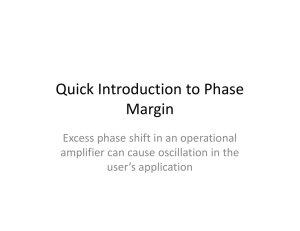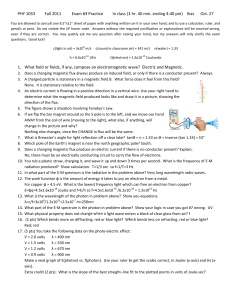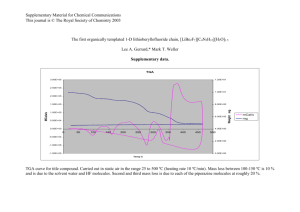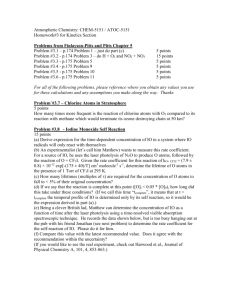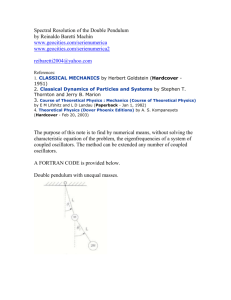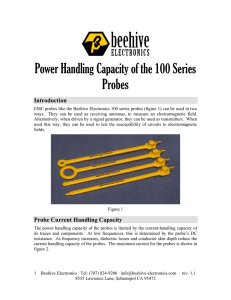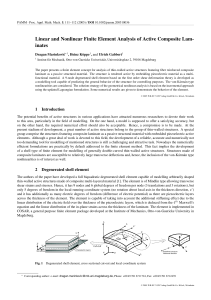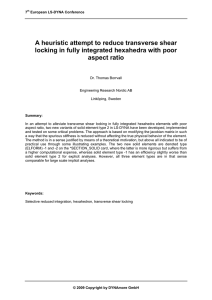PHYS-1500 PHYSICAL MODELING ...
advertisement
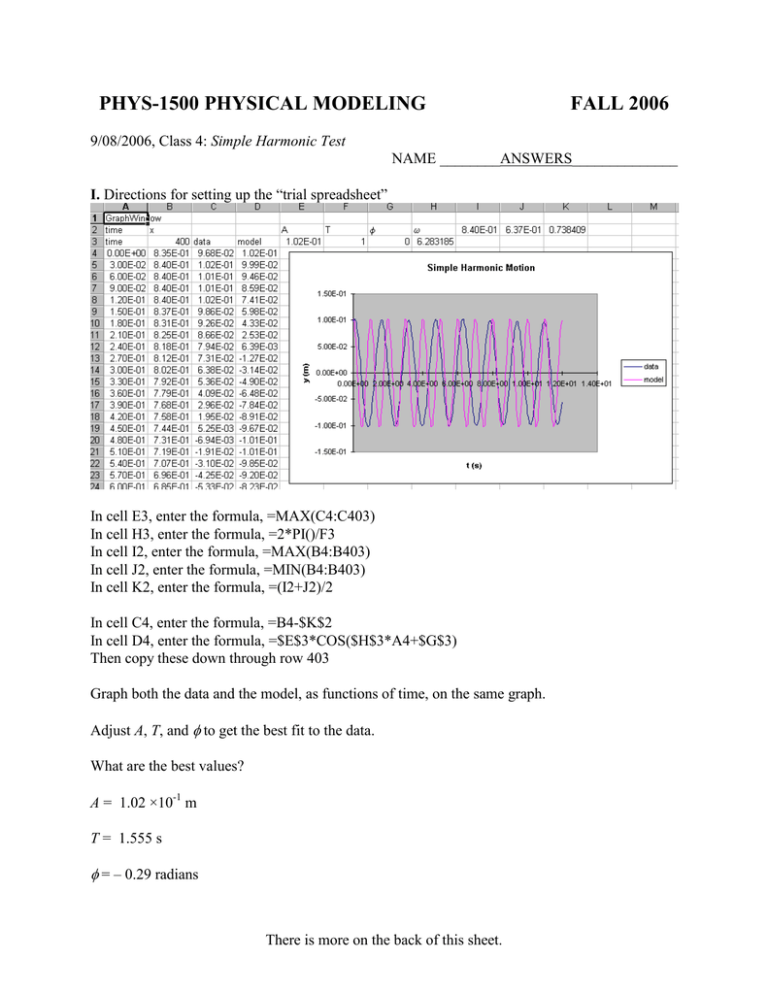
PHYS-1500 PHYSICAL MODELING FALL 2006 9/08/2006, Class 4: Simple Harmonic Test NAME ________ANSWERS______________ I. Directions for setting up the “trial spreadsheet” In cell E3, enter the formula, =MAX(C4:C403) In cell H3, enter the formula, =2*PI()/F3 In cell I2, enter the formula, =MAX(B4:B403) In cell J2, enter the formula, =MIN(B4:B403) In cell K2, enter the formula, =(I2+J2)/2 In cell C4, enter the formula, =B4-$K$2 In cell D4, enter the formula, =$E$3*COS($H$3*A4+$G$3) Then copy these down through row 403 Graph both the data and the model, as functions of time, on the same graph. Adjust A, T, and to get the best fit to the data. What are the best values? A = 1.02 ×10-1 m T = 1.555 s = – 0.29 radians There is more on the back of this sheet. Simple Harmonic Motion 1.50E-01 1.00E-01 y (m) 5.00E-02 data 0.00E+00 0.00E+0 2.00E+0 4.00E+0 6.00E+0 8.00E+0 1.00E+0 1.20E+0 1.40E+0 0 0 0 0 1 1 1 -5.00E-02 0 model -1.00E-01 -1.50E-01 t (s) II. Now set up model 3.1, on page 73 of the text book. Use: t = 0.1 s x0 = 3.0 cm v0 = 1.0 cm/s k = 1.0 dyne/cm m = 4.0 g Sketch the graph of the analytic solution and the Euler solution on the same graph. 5 4 3 2 1 0 -1 0 5 10 -2 -3 -4 -5 t (s) 15 x(t) cm Anal. x(t) cm Change k to 16 dyne/cm and sketch the same graph. 25 20 15 10 5 x(t) cm Anal. x(t) cm 0 -5 0 5 10 -10 -15 -20 t (s) 15


